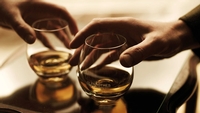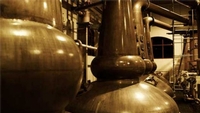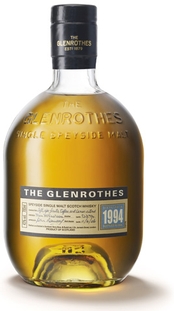|
|
 |
|
June 23, 2010
Our friends love participating in the food and wine-tasting sessions that form the basis for our “Wine With” feature here on WRO, and I bet yours would too. This can be a really fun and simple way to entertain a small group of friends, with wine education as a probable added benefit. Here are a few tips to help you plan your own “Wine With” party.
The first thing to do is determine how many guests to invite. When we are working on a “Wine With” column, we find that a total of four people is best (two guests plus the two of us) since we need to factor in certain considerations such as taking legible notes. But for a more informal, simple get-together / wine-tasting, the number of participants depends on what kind of event you want it to be. A sit-down dinner gets cumbersome when more than 6 or 8 people are involved, since even if you do have a table large enough to accommodate that number of guests, you’ll need plenty of extra space for the wine bottles, notepads, and dump buckets, not to mention the food itself. If you want to make it a bigger party, buffet service works best. Keep in mind, too, that more people means a greater number and variety of wines to be sampled, and inebriation should not really be the theme of the evening (remember the old warning: over-consumption of alcohol may lead you to mistakenly believe that people are laughing with you).
Time to think next about what to serve. The simple beauty of this sort of entertaining is that you really want to focus on a single dish so as not to confuse the palate. It’s also a good idea to keep pre-dinner drinking and noshing to a minimum for the sake of the palate, the appetite, and concerns about over-consumption. I don’t mean to overemphasize this last point, but trust me, people can easily drink far more than they realize in a format like this. You take a sip of wine and a nibble of food, try another wine and another nibble, then go back to that third white wine, and…well, you get the idea. (What’s that other warning? Something about alcohol consumption leading to the belief that you can carry on an intimate conversation without spitting?)
Okay, on to the main course. Ideally, you’re serving a one-dish meal to keep the focus on pairing wine with a specific food. To get you started, here are some dishes that I’ve found work well for a wine tasting dinner: Cassoulet, Paella, Jambalaya, Lasagna, Salmon (grilled or poached), Chili, Curried Anything. Most of these dishes have the further advantage of being prepared a day or two ahead of time. Alternatively you could emphasize simple classics with the goal of determining which wines really do taste best with steak, burgers, ribs, spaghetti and meatballs, lasagna. Another option would be to take the really simple route and pick up buckets of fried chicken, or sushi, pizza, enchiladas, or rotisserie chicken.
As for the wines, tell your guests what the focal dish will be, and ask each of them to bring a bottle of wine that he or she thinks will pair well with it. Everyone loves a blind tasting, so make sure the participants know in advance to hide the label by wrapping the entire bottle of wine tightly in aluminum foil or in a brown paper bag (secured with a rubber band at the top to discourage peeking), and of course segregate whites from reds at the party.
For an additional nice touch, the host can provide small notebooks, or at least pieces of paper, and pens, for guests to make notes on the wines they like best. Encourage them to decide which wine they think brings out the best qualities in the food, and vice versa, as opposed to which one they like best on its own. Have them rank the wines in order of preference, their top three or five wines, say. And do have plenty of dump buckets available--use large pails, ice buckets, old paint buckets, a big stock pot, whatever you can find.
And one last thing: You might want to introduce the evening with a word of caution, perhaps paraphrasing an old quip attributed to George Burns: “It takes only one glass of wine to get me loaded. Unfortunately I can’t remember whether it’s the thirteenth or fourteenth.”
Posted by Marguerite Thomas at 9:06 AM
|
|
June 18, 2010
What’s the perfect gift for a wine-loving Dad? Not wine, in my opinion, but rather a really great bottle of a distilled spirit.
Here’s my rationale: A really great gift is lasting, surprising, and not already possessed in abundance by the recipient, but wine given to a wine lover is very unlikely to fit this bill in all three respects. If your father doesn’t have a wine cellar, your gift can’t be a lasting one, since the bottle shouldn’t be held for long and ought to be drained the night it is opened. If he does have a cellar, your gift of wine could be lasting, but then it would be just one more bottle added to a pile, and probably not much of a surprise. wine lover is very unlikely to fit this bill in all three respects. If your father doesn’t have a wine cellar, your gift can’t be a lasting one, since the bottle shouldn’t be held for long and ought to be drained the night it is opened. If he does have a cellar, your gift of wine could be lasting, but then it would be just one more bottle added to a pile, and probably not much of a surprise.
By contrast, high-end spirits make terrific gifts for wine lovers. I can’t recall meeting one who didn’t appreciate excellent brandies and whiskeys. Yet, wine lovers tend to accumulate wine rather than distillates, and often don’t have more than a bottle or two of premium spirits in their home. Your gift should also prove lasting, since fine spirits are consumed a few sips at a time, and can be re-corked indefinitely. Finally, your present will come as a surprise, since wine  lovers assume that a bottle-shaped package contains wine just as surely as a thin box is presumed to hold a necktie. lovers assume that a bottle-shaped package contains wine just as surely as a thin box is presumed to hold a necktie.
The catch is that this whole idea only works if your budget will permit you to buy something special--meaning pretty expensive and relatively rare. Standard-issue spirits actually make pretty lousy presents, since a $20 Scotch poured at every corner bar will just look like a bottle of booze bought on the fly by someone who didn’t want to spend much energy on gift selection. If you are going to give spirits as a present, you need to either go high-end or go back to square one. you need to either go high-end or go back to square one.
There are lots of great choices at your disposal, but a recent release that gets my enthusiastic endorsement is Glenrothes Vintage 1994 ($80), a terrific Speyside Scotch that is so soft and sweetly fruity that it could make a convert of your father even if he hasn’t been a Scotch drinker in the past. Intensely peaty Scotches like Laphroaig or Lagavulin are amazing whiskeys but very risky presents because they are almost shocking in their intensity. By contrast, this soft, almost sweet-seeming Glenrothes is very complex and interesting but not at all challenging. And when it comes to Father’s Day, any challenges involved with a gift should fall to you--not your father.
Posted by Michael Franz at 11:28 AM
|
|
June 14, 2010
I was at a cocktail party, trapped in the corner by a man to whom I’d just been introduced.
“So you write about wine, eh?” His tone already sounded a bit belligerent as he wagged his half-filled glass of Chardonnay at me. “Why don’t you write something about the kind of language you people use.”
“Excuse me?”
“You know, all that jargon about cherries and berries, lime peel and coconut and gooseberries.” He gave a guttural grunt of disgust that sounded a bit like a spoon caught in the garbage disposal. “What the hell is a gooseberry anyway?”
“Well…”
“And wet stones!” he barged on. “I love that one! I mean, have you ever actually licked a stone--wet or dry?”
“Um…”
“Exactly! Why doesn’t anyone write about this incomprehensible nonsense?”
At about this point in our one-sided conversation, another guest came to my rescue and I was able to slip away from my interlocutor. But I have been thinking about what he said, and if he’d given me the opportunity I might have pointed out to him that, in fact, plenty of people have written about this very thing. There is endless prose out there poking well-deserved fun at the often overly earnest and, yes, he’s right, sometimes incomprehensible language we critics resort to as we grapple with analogy to describe a subject that really doesn’t have a common language of its own. There are countless apps and innumerable blogs devoted to wine humor, wine snobbery, or wine satire, most of them taking a jab at the language that professional critics use in their descriptions of wine. There are books galore on the subject, the best of the current bunch surely being Been Doon So Long, by the zany and eloquent vintner Randall Grahm, founder of Bonny Doon Vineyards.
I know a man who, many years ago, included a chapter on wine jargon in a book that otherwise had nothing at all to do with wine (Ask Your Mother and Other Impossible Situations, by Thomas Trowbridge, William Morrow, 1990). The chapter in question is devoted, tongue-in-cheek, to the author’s alleged visit to a wine shop after his wife asks him to pick up a bottle of wine to go with the cut of beef she’s making for dinner. When he arrives at the store, Trowbridge writes, the salesperson begins describing some of the wines.
“One was ‘big, voluptuous and seductive’; another was ‘soft, elegant and rich’; still another was ‘young and clean.’ All in all, though, he [the salesman] preferred one that was ‘mature and generous, with good body.’ Something funny was going on. I began to wonder: is this guy selling wine or running a dating service? I really didn’t wait to find out. As he continued with ‘stylish, lightly perfumed, supple,’ and mumbled something about ‘nose’ and ‘legs’ I slowly backed out of the store.
Once outside I called my wife and told her to freeze the beef and whip up some curry. I picked up a six-pack on the way home.”
For vintners, the job of making wine involves one part science, one part artistry. Writing about it involves the ability to condense together a few facts and figures interspersed with metaphor, simile, and at least a modicum of technological understanding (it helps, for example, to have a general idea what the process of malolactic fermentation is all about). There are unquestionably certain universal standards for assessing wine quality, and experience is essential to professional wine evaluation, but tasting wine will always be a subjective experience. One of the goals of those of us who write about it is to shed enough light on wines that you, the consumer, may not be familiar with, in the hopes of enticing you to buy a bottle or two on the way home instead of invariably picking up that six-pack. My colleagues and I here at Wine Review Online are all passionate about wine--we live for it, talk about it, and, of course, drink probably way to much of it--and we hope to share our passion (okay, obsession) with you. Alas, sometimes the message gets bogged down in the gobbledygook.
Oh yes, about those gooseberries. Much wine criticism, here in America, was inspired by the Brits--they do eat gooseberries, while any American who hasn’t spent much time in Europe is mostly clueless. As for wet stones, I confess that professional curiosity has compelled me once or twice to actually lick a damp river rock. What does it taste like? Well, to be honest, not much. But since I can think of no other simile to convey that particularly mysterious and delicious quality that some wines (especially whites) possess, I’ll continue to talk about wet stones and hope you have some idea what I mean. And by the way, there’s nothing that sounds better to me right now than a glass of big, voluptuous and seductive wine.
Posted by Marguerite Thomas at 4:23 PM
|
|
June 1, 2010
Critics Challenge 2010
Wine of the Year
Chateau Ste. Michelle 2009 Dry Riesling, Columbia Valley ($9)

Best of Show Sparkling
Perrier-Jouet 2002 Fleur de Champagne, France ($140)
Best of Show Red
Girard 2007 Petite Sirah, Napa Valley ($28)
Best of Show White
Chateau Ste. Michelle 2009 Dry Riesling, Columbia Valley ($9)
Best of Show Rose
Uptick Vineyards 2009 Hilda's Rose, Russian River Valley ($19)
Best of Show Dessert
V. Sattui Winery Angelica, Napa Valley ($30)
Best Chardonnay
Jordan Winery 2008 Chardonnay, Russian River Valley ($29)
Best Cabernet Sauvignon
Sawyer 2006 Cabernet Sauvignon, Rutherford, Napa Valley ($48)
Best Bordeaux Blend
Dry Creek Vineyard 2006 The Mariner, Dry Creek Valley ($40)
Best Pinot Noir
Stoller 2006 Pinot Noir, Estate, Dundee Hills, Oregon ($40)
Complete 2010 Critics Challenge Results
Posted by Robert Whitley at 1:46 PM
|
|
 |
|